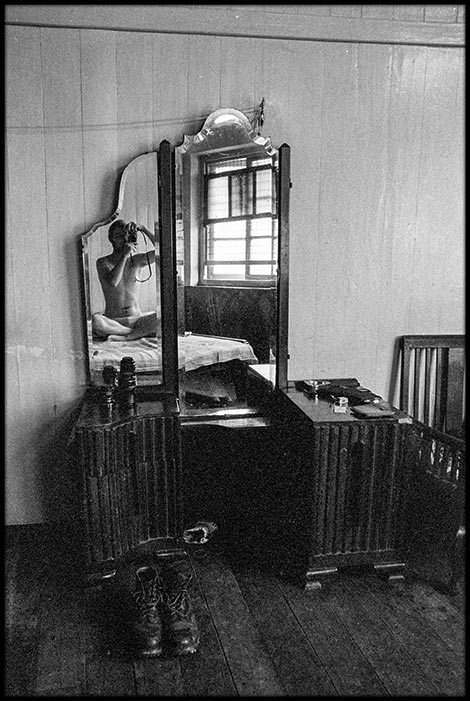Marking time in February 2017
Camera porn
Mike Johnston, who writes the Online photographer blog, has asked his readers to send in pictures of their favourite cameras. I expect to see gorgeous photographs of shiny chrome and dazzling glass. Camera porn.
Since I bought my first camera at the age of ten I have owned about two dozen cameras of various brands—Bolex, Cambo, Canon, Graphic, Kodak, Linhof, Olympus, Pentax. Every one of those cameras was a careful choice, and I liked every one of them. Too many favourites.
So I have chosen to send Mike a photo in which the camera is incidental, a minor detail. I had a long and productive partnership with that camera but it’s the story that matters, not the object.

When I studied architecture at the University of Queensland the course was a minimum of five years of full-time study, plus a year out after the third year. Students were required to work in architect’s offices for that year, or gain other useful experience. 1972 was my year out, and I spent most of it travelling. I hitch-hiked from Brisbane to Darwin, took a short plane flight to Timor Leste (Portugese Timor as it was called then), along the chain of Indonesian islands and on through Singapore, Malaysia and Thailand, by plane from Bangkok to Calcutta, then on the ground through India, Nepal, Pakistan, Afghanistan, Iran, Turkey, Greece, Italy, France, and by ferry to England (where I worked in an architect’s office).
My aim was to learn how to travel, and my method was to have the least possible insulation between me and the place I was in and the people I was among—a challenge for a shy introvert. To record the experience I had my Pentax Spotmatic 35mm SLR camera, with 50mm and 135mm prime lenses.
I was imbued with ideas about documentary photography that I had absorbed from Henri Cartier-Bresson and Bill Brandt. The work I admired, and aspired to do, caught the decisive moment and had a satisfying composition. To me this meant black and white pictures precisely framed in the camera and printed uncropped. Ah, the purity of youth. Before leaving I loaded 200 feet of Ilford HP4 bulk film into cassettes. It’s amazing now to think of travelling for eight months with a ration of about three dozen rolls of film, with 36 shots on each roll.
Prices for photographic equipment were low in Singapore, and I bought a wide-angle lens there, a 28mm SMC Takumar. The shot above is one I took while playing with the new lens in my downmarket hotel room.
Taking pictures as I travelled was a major project for me. I did a lot of thinking about what I was doing. I learned from the experience and from talking to people. Along the way I met travellers who had Nikons, cameras that were more robust and versatile than my smaller simpler Pentax. I got to fondle a few rangefinder Leicas too—exquisite machines—but I never did take to those viewfinders. I daydreamed of getting a Nikon F with a battery of lenses.
A formative experience was a three-day train journey from Teheran to Istanbul. On that train I met Jiro Mochizuki, a Japanese photographer who was heading back to his home in Paris after spending some months photographing in Afghanistan. We had time to talk, and I quizzed him about the way he worked. He carried a basic kit of equipment to process his black and white negatives wherever he was. While he was working, every evening he developed his film, so he could assess the day’s work before he set out the next day. It struck me that this was the way to get immediate feedback and improvement—I was also impressed with the labour that went into setting up a rudimentary film processing lab in places without clean running water. My dreams turned to the subject of a darkroom.
When Jiro showed me his cameras I had another revelation. He had a pair of battered Pentaxes, with black gaffer tape stuck over the shiny parts. These were tools for work, not objects for sensuous fondling. If those Pentaxes stood up to the use he gave them, I should be happy with what I had. And so I was, until more than ten years later when my Pentax was stolen and I replaced it with a Canon F-1.
When I got back to Australia in early ’73 I had to get back into studying. I bought an old caravan and made it into a darkroom that I shifted from place to place when I moved house. I processed the film from the trip and made contact proofs. I made a few prints then put that project aside. I had to get on with other things. Twenty years later I took another look at that body of work, but didn’t get very far. The task of assessing, editing and printing those negatives still awaits me.
So, what is my favourite camera? It doesn’t really matter. Other questions are more important.